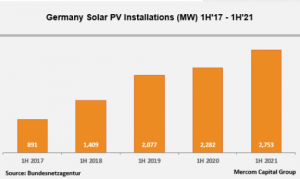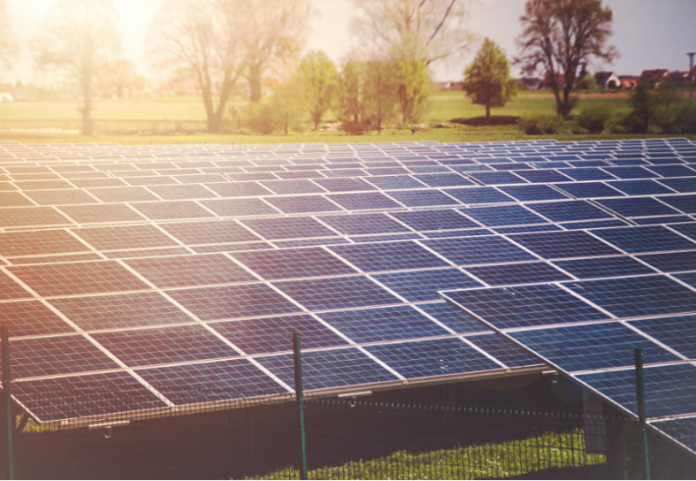Germany installed 1.43 GW of solar capacity in the second quarter (Q2) of 2021, according to the latest numbers released by the Federal Network Agency Bundesnetzagentur.
In a quarter-over-quarter comparison, solar installation in Q2 marked an increase of 113 MW (8.56%) from 1.32 GW in the previous quarter. In a year-over-year comparison, installations were up 15% compared to 1.24 GW in Q2 2020.
 Germany added 2.75 GW of solar capacity in the first half (1H) of 2021, a 20.63% increase compared to 2.28 GW in the same period last year. Installations have almost doubled compared to the same period in 2018.
Germany added 2.75 GW of solar capacity in the first half (1H) of 2021, a 20.63% increase compared to 2.28 GW in the same period last year. Installations have almost doubled compared to the same period in 2018.
In June 2021, 428 MW of solar capacity was installed, up 34 MW from 394 MW in the previous month. The cumulative solar capacity in Germany at the end of June 2021 stood at 56.73 GW.
Last month, Bundesnetzagentur announced the results of the 250 MW solar innovation auction. In all, 16 solar plus storage projects with a combined capacity of 156 MW were declared winners in the auction. The lowest bid quoted by the winning bidders for the solar plus storage combination was €0.0399 (~$0.0466)/kWh, and the highest bid was €0.0548 (~$0.0641)/kWh. The weighted average tariff of the awarded projects was €0.0455 (~$0.0532)/kWh.
Mercom earlier reported that Bundesnetzagentur selected 95 ground-mounted solar projects with 513.25 MW capacity, with an average quoted price of €0.050 (~$0.059)/kWh. The lowest bid quote for ground-mounted solar tender was €0.046 (~$0.055)/kWh, and the highest was €0.059 (~$0.070)/kWh. The agency also selected 114 rooftop solar projects with 152 MW capacity, with an average quoted price of €0.0688 (~$0.081)/kWh. The lowest bid quoted for rooftop solar tender was €0.0535 (~$0.063)/kWh, and the highest was €0.0789 (~$0.093)/kWh.
Recently, Siemens Smart Infrastructure and Zukunftsenergie Nordostbayern GmbH signed a letter of intent to construct a 100 MW battery storage facility in Wunsiedel, Germany. The 5,000 square meter energy storage facility will have a storage capacity of 200 MWh, intended to use surplus energy to cover peaks in the power grid.






